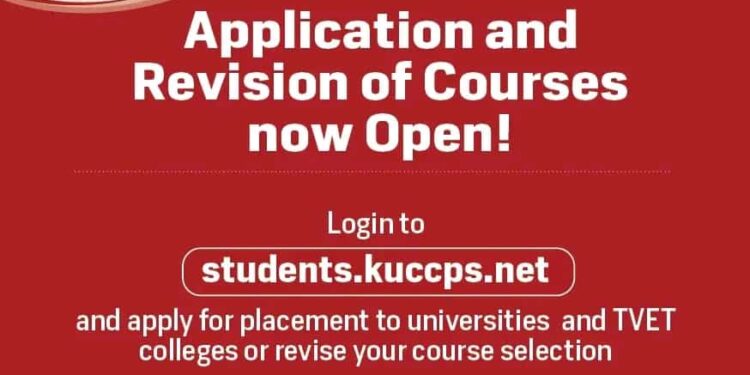KUCCPS Placement, course revision And deadline
Eligible students have until June 7, 2023 to submit an application for placement or change their programme of study using the Kenya Universities and Colleges Central Placement Service portal.
For placement in different universities and TVET institutes across the nation, applications are already being accepted.
Candidates for the 2020 KCSE are allowed to apply for a spot in the 2023/24 intake using the 2021 cut-off points, according to KUCCPS.
The 2021 cut-off will be used as a guide for application, and the 2022 cut-off will be made available after placement. After the course has been revised, the placement results will be made public, they stated in a tweet.
C+ is the prerequisite for entering a university. According to the new university and TVETs funding model presented by President William Ruto on May 3, all courses are government-sponsored.
The main goal of the new model is to give students from highly disadvantaged households an equal chance to pursue a college or university education by providing them with more capitation than their counterparts from wealthy families.
According to Ruto, the government will start using a funding mechanism where students would get capitation based on their level of need starting in the current academic year.
In the 2023–2024 academic year, a total of 173,127 new students will enroll in universities, while 145,325 more will enroll in TVET programs.
Thirty-seven public universities are eligible for government grants and Helb loans, but only Helb loans are available to thirty private colleges.
Government scholarships and Helb loans are available for 189 additional public colleges that the Ministry of Education has registered as TVETs.
There are further seven TVET universities and additional 27 public colleges registered under different Ministries that are neither supported by the government or eligible for Helb loans.
Ruto stated that financing for higher education has increased to Sh84.6 billion as of the upcoming intake, a 56% increase from the existing budget. He did this while announcing the new funding model.
He claimed that it consists of Sh31.6 billion for Helb loans and Sh53 billion that will be included in the budget.
After the increase, the maximum on capitation per student at universities increased to Sh208,000 from Sh152,000, while TVETTVET students would now receive training for Sh67,189 year instead of Sh71,420.
But money will be distributed according to four categories of need: vulnerable, desperately in need, needy, and less in need.
Students from low-income families who enroll in institutions will be eligible for government loans of up to 40% and scholarships for up to 53%.
Government loans of up to 30% and up to 50% scholarships will be given to those enrolling in TVET programs.
Only 7% and 20% of the cost of education will be covered by parents respectively for government-supported students and sponsored students at TVETs.
KUCCPS Placement, course revision And deadline

